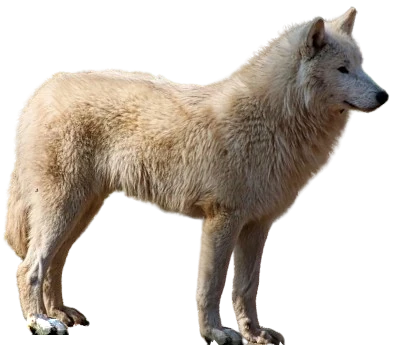
The Hudson Bay Wolf (Canis lupus hudsonicus) is a carnivorous canid known for its robustness and adaptation to cold environments. This wolf is primarily found in the arctic and subarctic regions of Canada.
The Hudson Bay Wolf is distinguished by its thick and gray fur, often with shades of white and black. It measures approximately 1.2 to 1.5 meters in length, including its tail, and weighs between 30 and 50 kg. Its tail is long and bushy, often with a black band at its tip.
The Hudson Bay Wolf belongs to the Canidae family.
This wolf is one of the subspecies of wolves most adapted to cold environments.
The Hudson Bay Wolf is primarily found in the arctic and subarctic regions of Canada, particularly around Hudson Bay. It prefers tundra and boreal forest habitats, where it can hunt prey such as caribou and arctic hare.
This canid is very social and lives in family packs. Packs are generally composed of a breeding pair and their offspring. Hudson Bay Wolves are most active at dusk and dawn, and they use their keen sense of smell and hearing to locate their prey.
Carnivorous, the Hudson Bay Wolf primarily feeds on large mammals such as caribou, but it can also hunt arctic hares, lemmings, and other small mammals. In times of scarcity, it can even feed on carrion.
Although the Hudson Bay Wolf is not endangered, it faces threats such as hunting, diseases, and climate change. Habitat loss due to global warming is a major concern for this subspecies.
The Hudson Bay Wolf belongs to the species Canis lupus, which includes several subspecies of wolves. These subspecies share common characteristics, including their social structure and hunting techniques. Populations located in isolated regions, such as those around Hudson Bay, tend to develop unique characteristics while maintaining genetic links with neighboring populations.
To observe the Hudson Bay Wolf in its natural habitat, follow these tips:
By following these recommendations, you can admire this fascinating animal while minimizing disturbances.